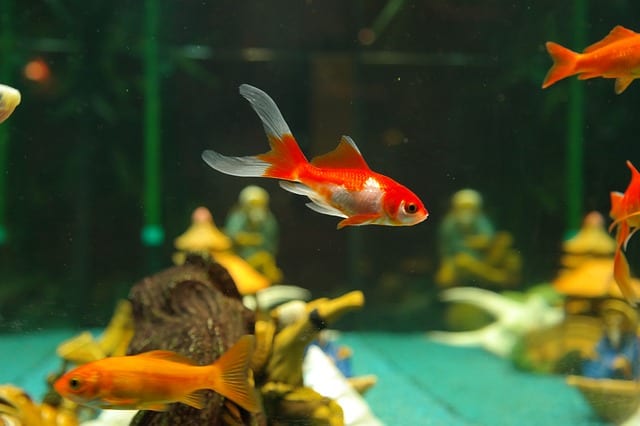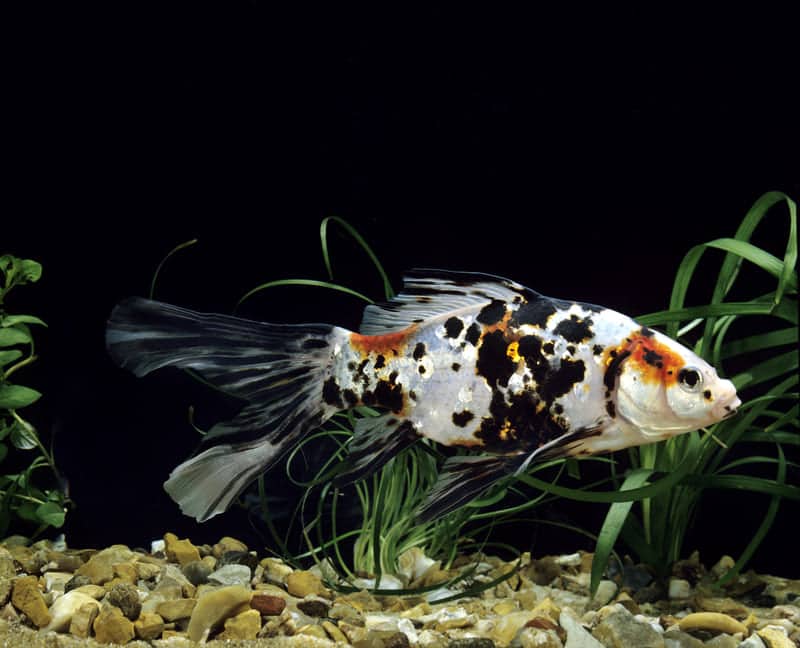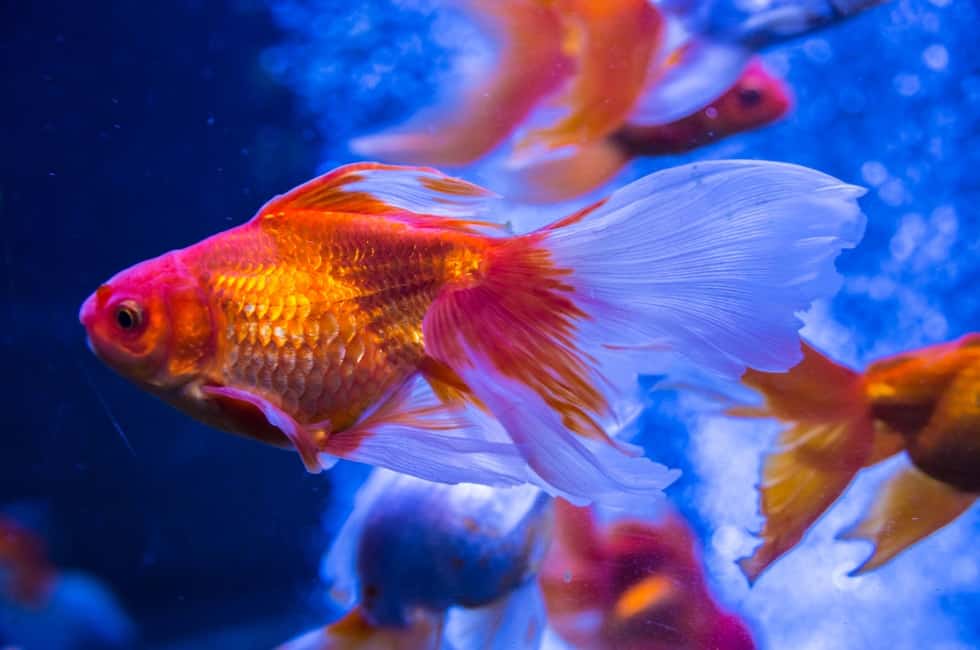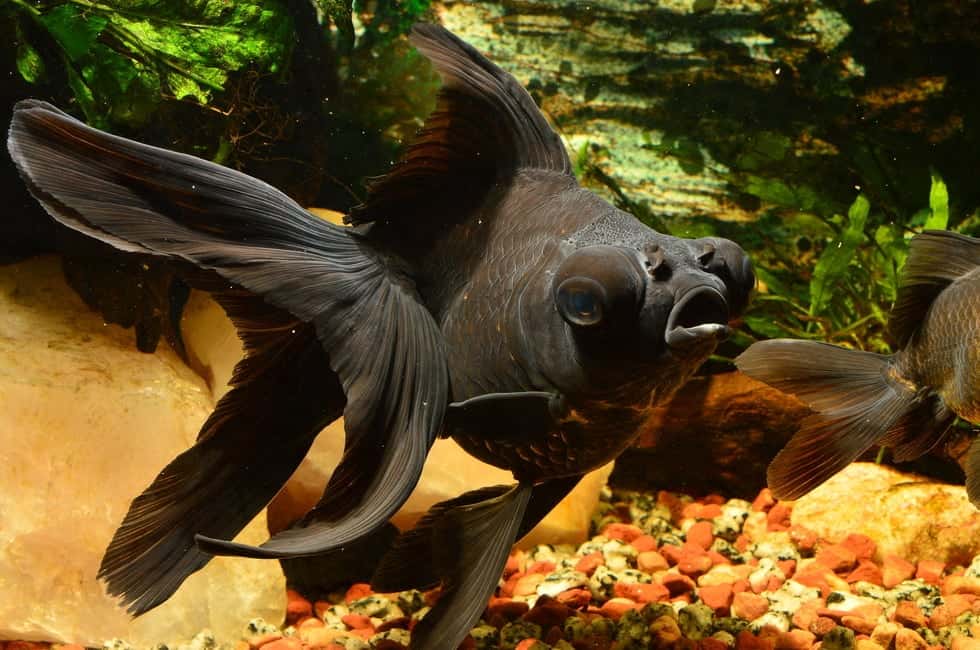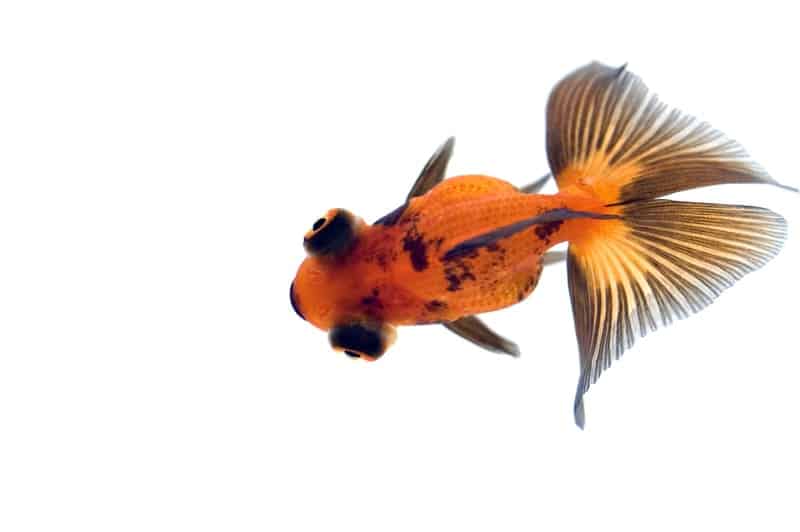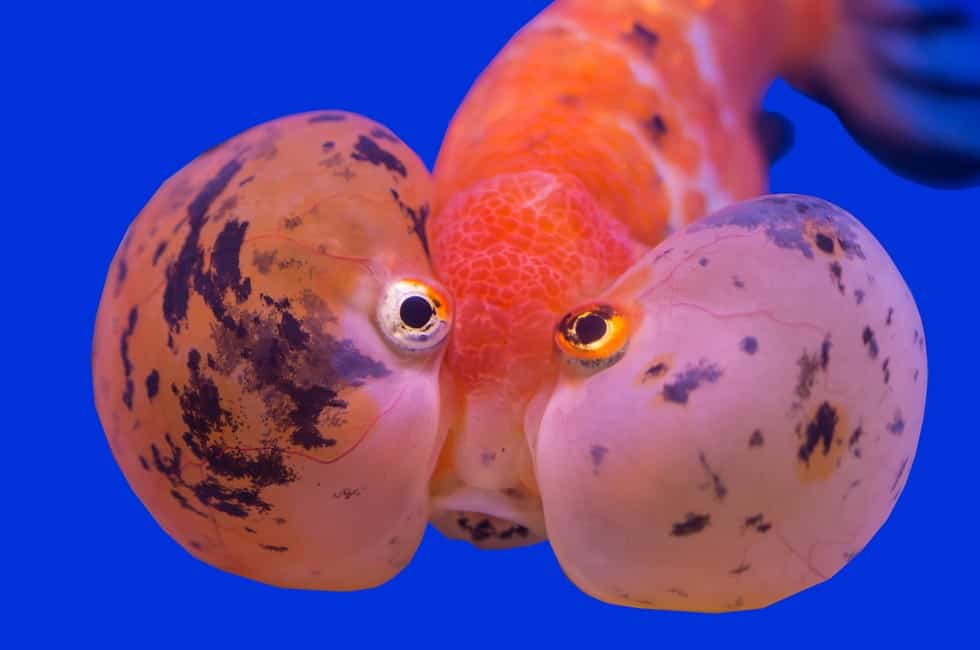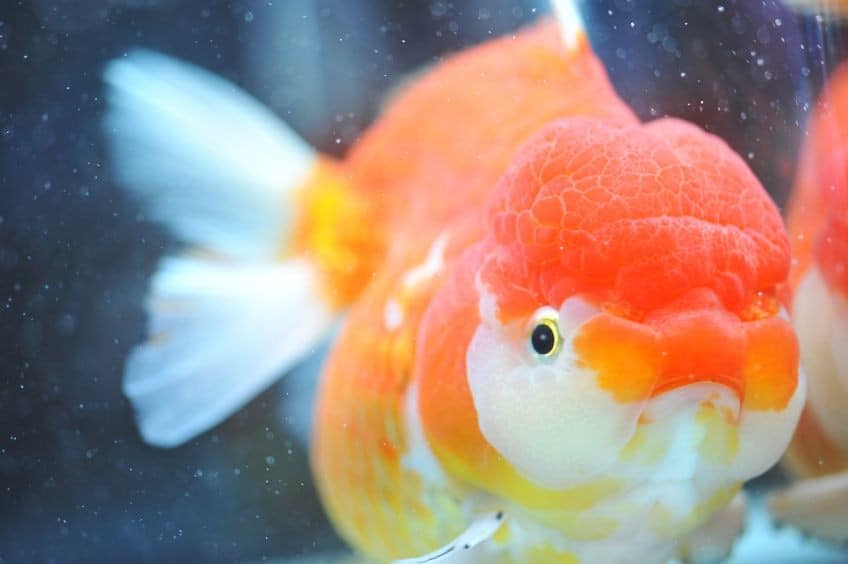Did you know, the modern-day goldfish has its roots dating back thousands of years in China? Yeah neither did we.
The goldfish is possibly the most underrated and abundant pet fish in the aquarium trade today, making appearances at almost every corner of any local fish store.
In this article today, we take you through the history, the husbandry, and the different varieties of goldfish there are today. It’s a long article so stay put.
How Many Types of Goldfish Are There?
Goldfish are generally split into 2 broad categories. The first category being the single-tailed variety (non-fancy) i.e single caudal and anal fin. And the second category is the double-tailed variety (fancy).
That said, however, there are more than 200 known varieties of goldfish in China alone.
The History of Goldfish
It was the Chinese who first started noticing small mutations in color in the Asian carps about 1500 years ago during the Jin dynasty.
The Asian carp was initially bred as a source of food fish in ancient China. Its large size and ease of breeding were the main reasons why this fish was a popular choice to be famed as a food fish.
As people continued keeping and line-breeding these fishes with their mutations, their colors and traits continued to intensify. Resulting in what we see today, the goldfish.
Of course, this process was painstaking and took almost 1000 years, but who’s complaining?
Interestingly, the colors yellow were meant for royalty (imperial color) during that period of time, and commoners were not allowed to display anything yellow. Thus there are generally more red and orange goldfish around. Cool eh?
When Did Goldfish Became Popular?
It did not take long until the rest of the world caught up with the trend of keeping goldfish as pets. By the 1600s, there were records of the goldfish already being raised in Japan, and in the subsequent years, other parts of Europe.
Apparently, during the 1620s in Southern Europe, the goldfish was highly sought after due to their reflective scales which symbolized good luck and fortune. It was not uncommon for goldfish to be given as an anniversary present.
Finally, the goldfish came to the USA sometime in the 1870s, which brought along an unprecedented wave of fish keeping due to the goldfish’s relatively small size and ease of care.
By the 1900s, there were almost 40 commercial hatcheries in America producing goldfish by the millions annually. Thanks to the hard work of these founding breeders, the goldfish has evolved to become one of the most iconic pet fish in the trade.
Why Keep Goldfish?
Goldfish make great pets for a myriad of reasons. The most popular being they are so, so easy to keep.
That said, goldfish are easy to keep because of their tolerance for a wide range of water parameters. And what this means in layman terms is that goldfish are very tolerant of your mistakes.
One of the most common problems new hobbyist face when keeping goldfishes isn’t maintaining water quality, but overfeeding.
Many new hobbyists don’t realize that fishes tend to eat and then overeat. This, in turn, results in the water fouling quickly. Goldfish are voracious eaters and never seem to be satisfied.
However, this problem is easily solved once you get the hang of how much should be fed. And also changing about 25% of the tank water every week should well solve the problem.
Goldfish are also generally not fussy about what they’re kept in. Most fancy species of goldfish are kept indoors in tanks, while the non-fancy or single tailed varieties will do well both indoors and outdoors.
20 Common Varieties of Goldfish
Because of the large number of varieties available we’ll be splitting this into 2 sections, non-fancy and then the fancy breeds.
1. Common Goldfish
The common goldfish is the most common variety of goldfish. It is also the variety that most closely resembles its ancestors. They are easy to keep, plentiful, and come in a huge variety of colors, white, orange, yellow, red, brown, black, etc.
Traditionally, the common goldfish were kept in china as a coldwater fish. However, in recent times, they are able to survive in most water conditions and are a very, very hardy fish.
The common goldfish if cared for properly can live a phenomenally long life. 15 years is not an uncommon number amongst hobbyists. They also can grow to a length of about 12 inches, making them a relatively big fish when they reach maturity.
Ultimately, the common goldfish is probably one of the best fish to keep if just starting out as they are hardy and do not require any special care.
2. Comet
The comet goldfish is a variety of nonfancy goldfish that was created right here in the USA. Comets are very similar to the common goldfish however they have a much longer tail.
The comet goldfish is a smaller variety and grows to an average of 6-10 inches when fully mature unlike the common goldfish variety.
Care is also identical to the common variety, they are easy and hardy fishes, which will accept a wide range of water parameters. They are usually also more of a brighter orange as compared to their common counterparts.
Along with the common goldfish, this variety also does well in pond setups due to their high tolerance for a wide range of water parameters. They can also be housed with bigger fish like koi.
However, care should be taken as they breed rather readily and will overpopulate any pond very quickly. This species of goldfish has also become a pest species due to their readiness to breed in most water conditions.
3. Shubunkins
This variety of goldfish is very similar to both the common and comet variety. The main difference they are differentiated by is their color, which is a calico on top of the usual white, red, or orange. This pearl-like appearance is caused by nacreous (resembling a pearl) scales and the calico coloring.
Originating from Japan, this variety of goldfish is also another widely popular variety of goldfish. The shubunkin also happens to have 3 smaller varieties under its name:
- London shubunkin – Short fins like the common variety
- Bristol shubunkin – Similar to a comet, however, has round lobed caudal fins
- Japanese/American shubunkin – Similar to a comet with pointed caudal fins
While these are the 3 main sub-varieties of the shubunkin group, there are many more that are not as recognized. Like the previously mentioned variety, the shubunkin does well in both pond and tank setups.
4. Wakin
The wakin variety is technically a fancy variety since it has a double tail however it has a long body and is still a rather athletic fish. Originating from Japan, the wakin variety is believed to have given rise to the fanciest twin-tailed goldfish we see today.
That said, the wakin does well in both the pond and in an aquarium. Like all the other varieties, the wakin lives a long time as well, sometimes up to 15 years. In a pond, the wakin can reach up to 18 inches in length.
5. Jikin
The jikin is relatively similar to the wakin with a slender long body and quite a short tail. When seen from behind however, the jikin’s tail is in the shape of an ‘X’ and is aptly named the peacock tail.
Additionally, the jikin also has another unique feature called the ‘rokurin’ or six scales when translated to English. It means the 6 parts of the body that are red, the lips, dorsal, pectoral, ventral, anal, and caudal fins. While red is the color most breeders strive for, a bright orange usually is more common.
The jikin is also very difficult to acquire as it is a registered protected species, therefore acquiring one would not only be expensive but also relatively hard. They are also a declared national treasure of Japan and are known as the peacock tail goldfish.
6. Ryukin
The ryukin originally came about by the mutation of the long-finned wakin. They have a thick and broad body and a big hump behind their head, which is their most noticeable feature. They also have a long double tail.
The ryukin is translated to the words “flowing-gold” in Chinese characters and is generally a predominantly redfish. However other color mutations exist such as red and white, silver, blue, black, and orange!
7. Fantail
The fantail is the most basic form of fancy goldfish. They have an egg-shaped body with long trailing double tail and fins. Some of the longer tailed varieties of fantails are sometimes called “veiltails” however they are still considered fantails.
The fantail, is quite a hardy goldfish and will do well in both a pond or an aquarium. They generally grow to a maximum size of 6-8 inches and generally live about 5-8 years. They also come in quite a few colors, most common are orange and yellow followed by red, white, and calico. This variety is also very beginner-friendly with a very docile temperament.
8. Telescope
The telescope goldfish variety is most well known for its protruding eyes. They were first bred in ancient China during the 1700s.
Their protruding eyes interestingly only start to protrude at about 6 months of age. This, however, is a big reason why they are generally not very suited for beginners. Although hardy, their eyes require special attention as they have poor vision and generally not a good competitor for food.
This variety of goldfish tends to have long trailing tails and varying degrees of protruding eyes. They also do not grow as big as the other goldfish varieties, generally growing a maximum of 5-10 inches in length.
9. Tamasaba
The tamasaba is a less known fancy. It has the same features as the ryukin, like the broad body and humped back however it has a single trailing tail.
This variety originates from Northern Japan, Yamagata prefecture, and is also known as the “mackerel tail goldfish”. This goldfish is rare and was apparently developed by crossing a Syounai (this variety is not available anymore) and a Ryukin. They also grow quite a bit larger than the Ryukin, easily reaching 10 inches..
The tamasaba is also surprisingly athletic considering its build. They do well in both pond and aquarium setups and come in a variety of different colors. However, this variety is relatively hard to come by and can be quite hard to acquire.
10. Veiltail
Similar to the fantails, except the veiltail has much longer fins. The veiltail has an egg-shaped body with extremely long fins which are well separated.
They are very graceful fish with delicate fins and can withstand colder temperatures. However, due to them being rather delicate and prone to swim bladder disease, it is a variety best kept for experienced keepers.
Their swimming ability is largely hindered by their round body as such should only be house with fish of similar traits so that they will not need to compete for food.
11. Butterfly
The butterfly is a variety of goldfish that is most distinguished by its (obviously) butterfly-shaped tail when viewed from above, simulating a butterfly in flight. They are a short-bodied breed with egg-shaped bodies.
Most of the time, you will see that telescope varieties tend to carry this trait and were bred as a top-view fish. These fishes however due to the way their tails are shaped are not good swimmers and generally swim very slowly.
The butterfly variety is best kept in a tank and is not beginner-friendly. Special care needs to be taken in terms of feeding and tank mates.
12. Oranda
The oranda is a fan favorite variety of goldfish. They are most known for the large growth on their head. This head growth is known as a hood or “wen” means crown in Japanese.
They have also nicknamed the lion head and they were first imported from China into Japan. Interestingly, they also hold the record for being the largest goldfish, at 16 inches long. But most will reach 10-12 inches easily.
It is more suited to the aquarium as its “wen” is rather susceptible to fungal and bacterial infections. The Oranda also comes in many colors however the most common being orange or “red-cap” where their bodies are white and their “wen” is bright red.
13. Pom Pom
Similar to the oranda variety, the Pom pom has a similar body shape. However what’s different is instead of massive head growth, the pom instead has 2 gelatinous nasal growths. These nasal growths look like pom poms when they swim, hence their nickname.
These growths generally start growing when they are about 18 weeks of age and will take several months to grow. Although the growths are not as big and pronounced as the “wen” in the oranda, they are still highly visible and can vary in color.
Full-grown, the pom pom is not a large fish and grows to about 6 inches in length. Like most fancy varieties, they should be kept in indoor aquariums as their nasal growths are quire susceptible to fungal and bacterial infections.
14. Tosakin
The tosakin originally created by crossbreeding the osakaranchu and the ryukin. While having the same body structure as the ryukin, it has a pointed mouth and a triple fantail.
They are bred to be viewed from the top. They are characterized by a beautiful fanned out tail which curls. The tail is described to be a triple lobe that extends beyond the gills sometimes.
The tosakin is a rare variety and almost went extinct due to certain natural disasters in Japan.
However, a breeder managed to find 6 of them in a restaurant and traded a bottle of alcohol for them during that period of time and then carried on the lineage from there.
They are also extremely poor swimmers because of their odd-shaped tail and will only do well indoors.
15. Pearlscale
The pearl scale is a unique variety of goldfish that has rounded scales with a pearl-like appearance and a body similar to a golf ball. Their pearl scales are usually arranged neatly in rows, the neater the row, the higher quality they are. Some pearl scales also have a crown.
They can have both long or short fins and can reach a length of up to 9 inches! However, due to their short compact bodies, they are quite prone to swim bladder problems. As such is not a good fish to keep outdoors and will do well only in aquariums indoors.
16. Celestial
The celestial eye is aptly named due to its eyes constantly facing upwards as if looking to the heavens. This feature makes this variety one of the most unique in this list. Like the telescope variety, the celestial eye variety also has extended eyestalks however their eyes are faced upwards.
Generally, they do not grow very big, a length of 5-6 inches is common, with an average lifespan of about 10 years. The celestial variety like the telescope should only be kept indoors in aquariums with no sharp objects as it could rupture their eyes.
17. Bubble eye
Originating from China during the 1900s, the bubble eye is probably one of the most delicate varieties of goldfish. Their eyes are also pointed upwards, much like their celestial counterparts, however they have 2 liquid-filled sacs below their eyes as well and they also have no dorsal fin.
Much like the celestials, the bubble eye also should be housed in tanks with no sharp objects as their eye sacs are prone to rupture. Tankmates also should be carefully considered as an overly active fish that might be a threat to their eyes.
18. Lionhead
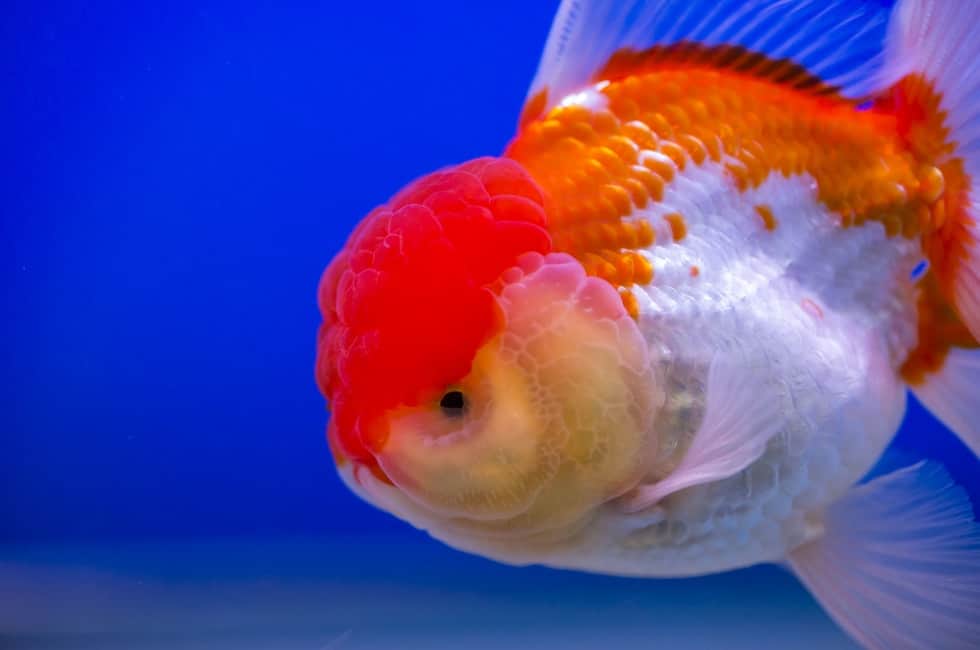
This variety is probably most well known for the lack of a dorsal fin, like the bubble eye and celestial varieties. They also have an egg-shaped body and generally have a hood that gives them the nickname, ‘lion head’.
This bubbly hood is unlike the oranda, where it occurs on the top of the head, the lion head’s hood looks more like a face mask that covers the entire frontal region of the fishes face.
The lion head also has a double caudal and anal fin. They are said to be the precursor of the ranchu variety. A rather delicate fish, they are not recommended for new hobbyists as special care needs to be taken due to their inability to swim well.
19. Phoenix Egg fish
The phoenix egg fish is a relatively popular variety of goldfish that has its roots in China. Their features are similar to the lion head where they have an egg-shaped body, lack a dorsal fin but have a double caudal and anal fin.
They however have very long flowing tails and anal fins. They generally grow to about 6-8 inches in length and are a relatively sensitive variety of goldfish.
Due to their inability to swim well, they should be kept in indoor aquariums with other slow-moving goldfishes so that they do not get stressed fighting for food.
20. Ranchu
The ranchu is possibly the most famous fancy goldfish in this list. It is also my favorite.
The name, ‘ranchu’ means king of goldfish and originates from the Japanese development of the lion head. What we see today is the painstaking process of line breeding certain traits into what we come to know as the ranchu.
They are identified by the lack of a dorsal fin, slightly arched back, a small tail, stubby fins, and a pronounced egg-shaped body. They also come in all sorts of colors!
While there are now many breeders of the ranchu in the world, they are generally classified into 2 categories:
- TVR – Stands for ‘top view ranchu’
This methodology of appreciating the fish originated from china when they kept fishes in jars or vats, and the only way of viewing them was from the top.
- SVR – Stands for ‘side view ranchu’
Much like the TVR, the SVR is just another way of appreciating the fish.
When tastes started to diverge and people started to keep ranchus in aquariums, it was only natural that new methods of viewing and criteria were created to better appreciate the fish.
The ranchu is considered one of the most sought after goldfish by collectors worldwide and for good reason. They’re adorable.
How to Keep Goldfish?
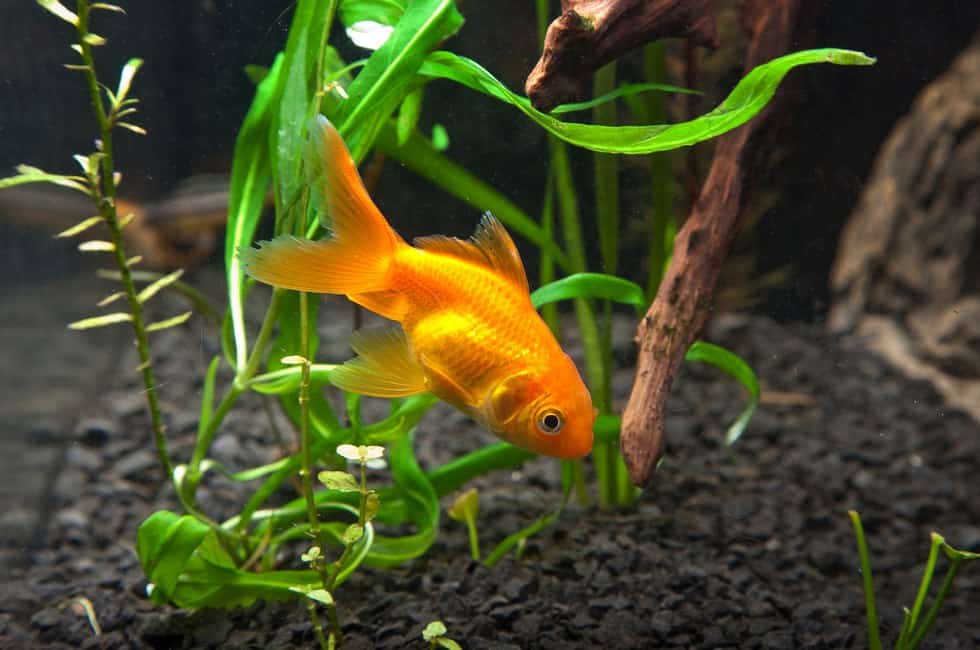
The tank
A general rule of thumb is to start with a 10-gallon tank with an additional gallon for every 1 inch of fish. Goldfish generally do well in smaller spaces, HOWEVER, fish bowls are not recommended as the water quickly fouls if not careful.
A 10-gallon tank will comfortably house 1 fancy goldfish for its entire life. Something that looks like this tank (link to amazon) will do very well.
Check out these other tanks on Amazon as well:
- Tetra 20 Gallon Complete Aquarium
- Aqueon 100527256 Fish Tank Aquarium LED Kit, 10 Gallon
- Tetra PLAYMOBIL Explore Your Aquarium 10 Gallon Kit
Filtration
While the nonfancy varieties of goldfish tend to do well both indoors and outdoors, the fancy varieties are generally a lot more sensitive and require a robust filtration system.
That said, it is important to get a filtration system that is able to handle about 10x the volume of water in the tank an hour due to fancy goldfishes being relatively sensitive to high ammonia. Therefore a higher turnover rate is preferred.
Some of the common filtration systems people use today include:
These are my Favorite, on Amazon:
While the type of filtration is not as important as compared to the turnover rate, it is still good to buy a filtration system that you like and will prefer to use.
Water Parameters
Goldfish are generally rather hardy by nature and will survive in a wide range of water parameters.
That said, however, they do have optimum parameters. Please remember that these only serve as a guideline. Acclimation and consistency are more important.
- Temperature – 18-25°C
- pH – 6.8-8.0
- kH – 80-160ppm
- gH – 200ppm or higher
What varieties of goldfish are there?
Like I mentioned earlier, goldfish are categorized into 2 main groups, the single-tailed varieties also known as non-fancy varieties, and the double-tailed varieties also known as fancy varieties.
The single-tailed varieties generally have a more athletic build to them and are hardier as compared to their fancy counterparts. They also only have a single caudal fin and anal fin.
The non-fancy single-tailed varieties are also generally cheaper than their fancy varieties and are often found as ‘feeder’ fish. Some examples of the non-fancy varieties include comets and shubunkins.
The double-tailed varieties have 2 caudal and anal fins. They are also the more expensive and more popular option for a pet goldfish. The fancy varieties tend to have special care requirements often due to their odd shape.
For example, bubble eyed goldfish need to have an almost bare tank due to the bubble eye sacs below their eyes being soft and gelatinous. Anything sharp in the vicinity could pierce and rupture their eye sacs.
Feeding the fancy species is the same. They are opportunistic feeders and don’t know when to stop eating.
FAQ
Q: What makes a goldfish fancy?
A: Fancy goldfish are generally characterized by the presence of a double caudal and anal fin. That said, fancy goldfish are also more expensive and more sensitive than their non-fancy counterparts due to many generations of line breeding.
Q: What are some common problems fancy goldfish have?
A: Quite a few actually. These problems occur most often because of the body shape of the fish i.e, the egg shape. This is because due to the way their body is shaped, their organs are compressed, therefore leading to conditions including:
- Swim bladder problems (causing problems swimming)
- Bacterial infections (overeating)
- Fungal infections (occurs in lion heads, orandas, and pompoms most often)
Q: How can I prevent these issues from happening?
A: Generally, experienced keepers will know to stick to the following rules when keeping sensitive fancy species:
- Avoid temperature fluctuations
- Feed high fiber food and avoid processed foods to stimulate bowel movement
- Do not keep in a deep tank as their swim bladders often cannot cope
- Be very careful when you are handling the fish
Q: Can different goldfish be housed together?
A: Absolutely! However, most fancy species are slow swimmers and should not be housed with other nonfancy varieties as they would need to compete for food and get stressed out. But the same variety usually does well in groups together!
Q: How long do goldfish live?
A: Most non-fancy goldfish will live up to 20 years of age if cared for properly while most fancy varieties will live to about 6-10 years on average. Fancy varieties tend to live shorter lives due to them having weaker genes from generations of line breeding.
Final Words
Now that we’ve gone through the history, general husbandry, and what to look out for, remember that if you stick to the few simple rules, you will be a successful goldfish keeper, fancy or not!
Fancy goldfish, in general, are more sensitive due to the many years of line breeding and as such should only be attempted by the keeper with some experience.
They are often quite a lot more expensive than their nonfancy counterparts as well. All in all, we hope that this article was informative and fun for you as it was quite a lot of work to put together.
Thanks for reading!



